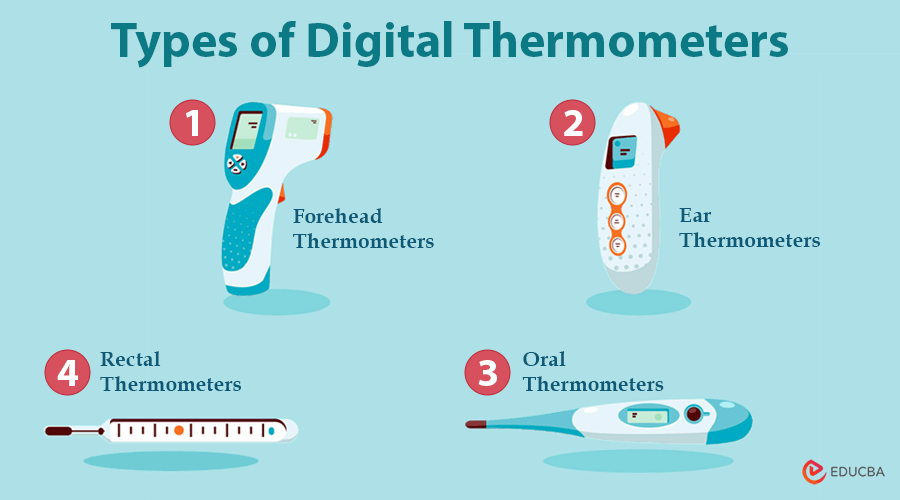What is a Digital Thermometer?
A digital thermometer is used to quickly and accurately measure body temperature, making it an essential tool for families. A reliable Digital Thermometer is not just another gadget but an essential tool for every family. Whether tackling flu season or handling an unexpected fever at night, the right thermometer can make all the difference.
This guide will help you find the perfect digital thermometer by highlighting key features and sharing top product recommendations from pharmaquipt.com so that you can stay ready for life’s health challenges.
Why Every Family Need a Digital Thermometer?
Picture this: It is 2 a.m., and your toddler wakes up crying and burning with fever. You reach for a thermometer, but it takes forever to give a reading—or worse, it seems off. Moments like these are why having a reliable digital thermometer is so important.
A reliable thermometer gives fast, accurate readings, helping you make confident decisions about your loved one’s health. Technological advancements make digital thermometers faster, more accurate, and easier to use than ever before.
Different Types of Digital Thermometers and Their Benefits
Not all thermometers are created equal. Choosing the right one depends on your family’s needs. Here is a breakdown of the most common types:
| Type | Accuracy | Speed | Ease of Use | Best For |
| Forehead Thermometers | Moderate | Fast | Very Easy | Sleeping babies, quick checks |
| Ear Thermometers | High | Very Fast | Moderate (positioning required) | Older kids and adults |
| Oral Thermometers | High | Moderate | Easy | Older kids and adults |
| Rectal Thermometers | Very High | Moderate | Less Convenient | Infants and young toddlers |
- Adtemp™ Non-Contact Skin Surface Thermometer: Perfect for quick, hygienic checks.
- Vive Precision Smart Oral Thermometer: Offers reliable readings for older children and adults.
Features That Matter in a Digital Thermometer
When selecting a digital thermometer, focus on features that align with your family’s lifestyle and health needs:
- Accuracy: Small variations can lead to big decisions. Infrared models like the Vive Precision Infrared Thermometer are known for precise readings.
- Speed: When time is critical, fast results matter. The Veridian Instant Tympanic Ear Thermometer delivers results in just one second.
- Ease of Use: Non-contact thermometers are lifesaving for parents with restless children.
- Memory Storage: Monitor temperature trends easily with models like the Adtemp™ Non-Contact Thermometer, which stores multiple readings.
Know Your Family’s Needs
Every family is different, so consider these factors when choosing the best digital thermometer:
- Age: Rectal thermometers are the gold standard for accuracy for infants. Oral or ear thermometers are convenient and effective for older kids and adults.
- Frequency of Use: If you frequently monitor temperatures, opt for models with quick-read features and memory storage.
- Hygiene: Non-contact thermometers reduce the risk of cross-contamination, making them ideal for larger families.
Practical Tips for Accurate Temperature Readings
To ensure you get the most reliable readings with your digital thermometer, follow these tips:
- Forehead Thermometers: Keep the device 4-6 cm away from the forehead for consistent results.
- Ear Thermometers: Pull the ear upward and back before inserting the thermometer.
- Oral Thermometers: Wait at least 15 minutes after eating or drinking before taking a reading.
Why Accuracy Matters?
Accuracy is non-negotiable in health monitoring. A few degrees off can mean the difference between staying home and heading to urgent care. Investing in a quality digital thermometer ensures you can make confident decisions about your family’s health.
Final Thoughts
Choosing the right Digital Thermometer is more than convenience—it is about safeguarding your family’s health and well-being. By understanding the options and prioritizing the features that matter, you will find the perfect fit for your home.
Frequently Asked Questions (FAQs)
Q1. How often should I replace my thermometer?
Answer: With proper care, digital thermometers are durable. Replace if readings become inconsistent, there is physical damage, or batteries cannot be replaced.
Q2. Are non-contact thermometers accurate?
Answer: Yes, when used correctly. Models like the Adtemp™ Non-Contact Skin Surface Thermometer provide accurate readings when held at the correct distance and angle.
Q3. What should I do if I get an unusually high reading?
Answer: Recheck after a few minutes to ensure proper usage. Seek medical advice if high readings persist with symptoms.
Q 4. Can digital thermometers be shared among family members?
Answer: Yes, but clean thoroughly with alcohol wipes after each use. Non-contact thermometers reduce contamination risk.
Q5. Are smart thermometers worth the investment?
Answer: Absolutely! Smart thermometers simplify tracking temperature trends, especially for families managing frequent illnesses.
Q6. What is the normal temperature range?
Answer:
- Oral: 97.5°F to 99.5°F
- Rectal: 98.6°F to 100.3°F
- Forehead: 97.1°F to 99.3°F
- Ear: 96.4°F to 100.4°F
Q7. Can non-contact thermometers measure object temperatures?
Answer: Yes, many models have dual modes for checking body and object temperatures, making them versatile tools for baby bottles, bathwater, and room temperature.
Recommended Articles
We hope this guide on digital thermometers has been helpful. For more tips on health tools and family wellness, check out these recommended articles.


